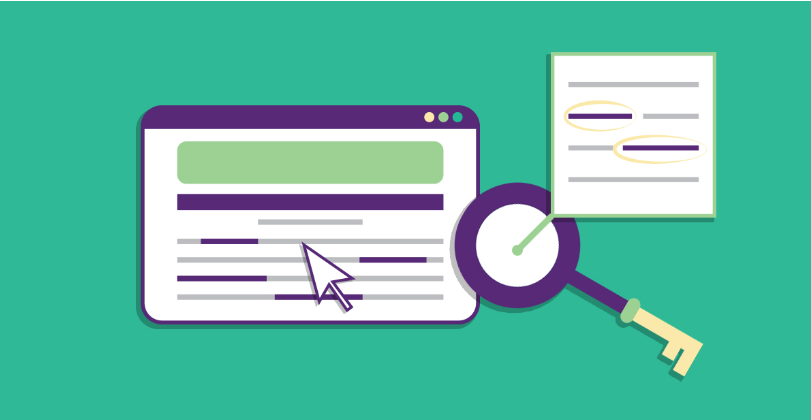7 Essential On-Page SEO Ranking Factors You Need to Care About
In the ever-evolving world of digital marketing, on-page SEO remains a cornerstone for anyone looking to enhance their website’s visibility and ranking on search engines. As we navigate through 2023, understanding and implementing effective on-page SEO strategies has become more crucial than ever. Central to this is Google’s E-E-A-T framework, which stands for Expertise, Experience, Authoritativeness, and Trustworthiness.
These on-page SEO principles not only guide content creators in producing valuable content but also serve as a benchmark for search engines to rank content. In this article, we will delve into seven key on-page SEO ranking factors that are imperative in today’s digital landscape.
-
Content Quality and Relevance
The adage “content is king” remains undeniably true in the context of a successful SEO strategy. High-quality content that resonates with your audience can set you apart in the crowded online space. Google defines thin content as material that lacks authenticity and value, such as auto-generated copy or scraped content. To stand out, your content needs to be more than just filler; it should be:
Trustworthy: Ensure that the information is accurate and fulfills the promises made in the headline.
Useful: The content should address the queries or needs of your audience, providing the
information they seek.
Actionable: Alongside providing information, include practical advice or steps, guiding the reader to take action.
Readable: Present your content in an organized, easy-to-scan format, using headers, bullet points, and visual elements to break up text.
Adequately Long: While there’s no one-size-fits-all answer to the ideal content length, strive for comprehensive coverage of your topic. A benchmark of 1,500 to 2,400 words can be a good starting point, depending on the depth required by the subject.
-
Keyword Optimization
Keywords remain the linchpin of on-page SEO. They guide search engines in understanding the topics and relevance of your content. Effective keyword optimization involves thorough research to identify terms that are not only relevant but also attainable in terms of competition. Here’s how you can optimize your content with keywords:
Keyword Placement: Your primary keyword should feature in critical areas like the title tag, URL, H1 tag, and within the first 100 words of your content. This placement helps search engines quickly ascertain the main focus of your page.
Frequency and Relevance: While it’s important to include keywords, stuffing them indiscriminately can harm your SEO efforts. Aim for a natural frequency that maintains content quality and readability.
-
Page Load Speed
In an age where users expect instantaneous results, the speed at which your page loads can make or break your website’s success. Page speed is a critical ranking factor for several reasons:
Mobile-First Indexing: Google’s shift towards mobile-first indexing places a premium on mobile site speed.
User Experience: A slow-loading website can lead to a poor user experience, increasing bounce rates and negatively impacting your SEO.
Optimizing images, minimizing code, and leveraging browser caching are some ways to improve page load speed.
-
Use of Images and Alt Tags
Images do more than just make your page visually appealing; they play a significant role in SEO. Here’s how you can optimize your images:
Image Optimization: Ensure that images are appropriately sized and compressed to reduce load times without compromising on quality.
Alt Text: Alt tags serve two main purposes. They provide context to search engines about the image content and enhance accessibility for users with visual impairments. Descriptive alt text that includes your target keywords can further boost your SEO.
-
Effective Use of Title and Headings
Your page title and headings are not just vital components of your content structure; they also play a significant role in SEO:
Title Tag and H1 Tag: These should include your primary keyword. The title tag is crucial for search engine results, while the H1 tag defines the main topic on your page.
Headings (H2s, H3s, etc.): Use these to organize your content logically and include keywords where relevant.
-
Schema Markup and Structured Data
In the realm of SEO, clarity is king. Schema markup is a powerful tool that helps search engines understand the context and content of your pages more effectively. By implementing this structured data, you can enhance the way your pages are displayed in search results, making them more attractive to users.
Features like star ratings, reviews, and rich snippets can significantly boost your page’s visibility and click-through rates. Incorporating schema markup is a step towards not only improving your SEO strategy performance but also enhancing user experience by providing clear, concise information right in the search results.
-
URL Optimization and Linking Strategies
A well-optimized URL is concise, keyword-rich, and indicative of your page’s content. Simplify URLs by using dashes to separate words and keeping them short and relevant. This not only benefits SEO but also improves user experience. When it comes to linking, there are two types to consider:
External Links: Linking to authoritative and relevant external sites can enhance your site’s credibility. Aim to include links to high-quality sources that provide additional value and context to your content.
Internal Links: Effective use of internal linking helps in distributing page authority throughout your site and keeps users engaged. Ensure that the anchor text for these links is descriptive and relevant to the target page.
Additional On-Page SEO Considerations
While the above factors are crucial, there are additional elements to consider for a well-rounded on-page SEO strategy:
Mobile-Friendliness: With the increasing prevalence of mobile browsing, ensuring your website is mobile-friendly is vital. This includes responsive design and making sure all elements display correctly on various devices.
Crawlability: Ensure your pages are accessible for search engine crawlers. Use tools like Google Search Console to check for indexing issues.
Social Share Buttons: Facilitate content sharing on social media platforms. This can amplify your reach and potentially attract more backlinks, although it’s not a direct ranking factor.
Content Freshness: Regularly updating your content keeps it relevant and valuable. This could include updating statistics, adding new sections, or refreshing outdated information.
Conclusion
On-page SEO in 2023 demands a multifaceted approach. It’s not just about peppering your content with keywords or having a fast-loading site; it’s a delicate balance of quality content, technical optimization, and user experience. Remember, SEO is moving target that requires a dynamic approach that considers the latest trends and algorithm updates is key to maintaining and improving your website’s search engine performance.




